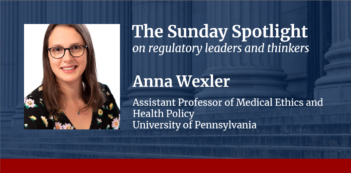
Inconsistent enforcement of the UK’s health and safety regulations unduly burdens businesses.
Regulations of the United Kingdom’s Health and Safety Executive (HSE) are largely well-targeted to improve workplace safety and health, but they are interpreted and applied in an inconsistent manner that creates unnecessary burdens for businesses. The government can reduce this regulatory burden by simplifying and consolidating its regulations, ensuring its regulations are based on sound science, directing better the enforcement of health and safety standards, and creating exemptions when justified.
The sheer mass of regulation makes compliance with them difficult and expensive. Consolidating regulations by sector would reduce the number of regulations by over one-third. It is also important to clarify and simplify the language used within health and safety regulations, as some regulations are too lengthy, technical and complex. A significant amount of health and safety regulation simply implements European Union Directives, and the government should ensure that such law is based on the evidence and risks.
The HSE currently shares enforcement authority over health and safety laws with local authorities, sometimes resulting in inconsistent decisions. Also, local authorities may have a tendency to inspect relatively low-risk workplaces because the HSE does not inspect them – precisely because of their low risk. To ensure that enforcement is consistent and targeted at risk, the UK Parliament should pass legislation giving HSE authority to direct all local authorities’ health and safety enforcement.
The HSE should also ensure its regulations are targeted at risk by exempting from health and safety regulation those self-employed workers whose activities pose no potential risk of harm to others.
In addition to reducing regulatory burdens, the burden of civil actions against businesses should be reduced by procedurally limiting required pre-action exchanges of information between parties and by substantively reconsidering regulations imposing strict liability on employers. To protect themselves in case of lawsuits and the discovery requirements that go with them, employers are generating paperwork for every possible risk. The government should limit the regulations for which employers are held strictly liable (that is, regardless of their culpability), both because of the burden such regulations impose and because strict liability seems inconsistent with the “reasonably practicable” qualification on most health and safety regulations.
While there is considerably less workplace health and safety regulation than thirty-five years ago, businesses still face regulation that is overly complex and unclear, not proportionate to risk, and enforced inconsistently. The government should simplify and consolidate its regulations, remove requirements that generate paperwork without properly targeting risk, and limit unnecessary burdens that administrative enforcement and civil actions currently impose.
This essay draws on Löfstedt’s report to the UK Parliament, submitted at the invitation of the Minister for Employment, Rt Hon Chris Grayling. In response to the report, the Minister wrote “We will now move swiftly across Government to ensure [Professor Löfstedt’s] recommendations are implemented as quickly as possible.”




